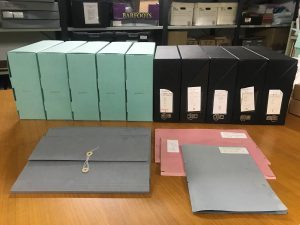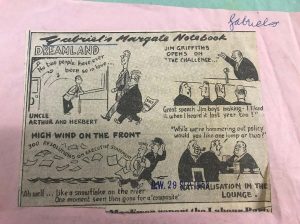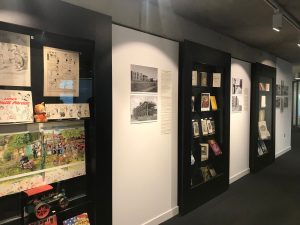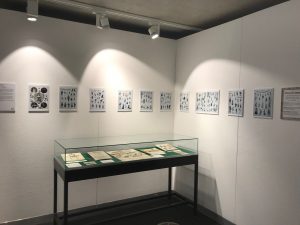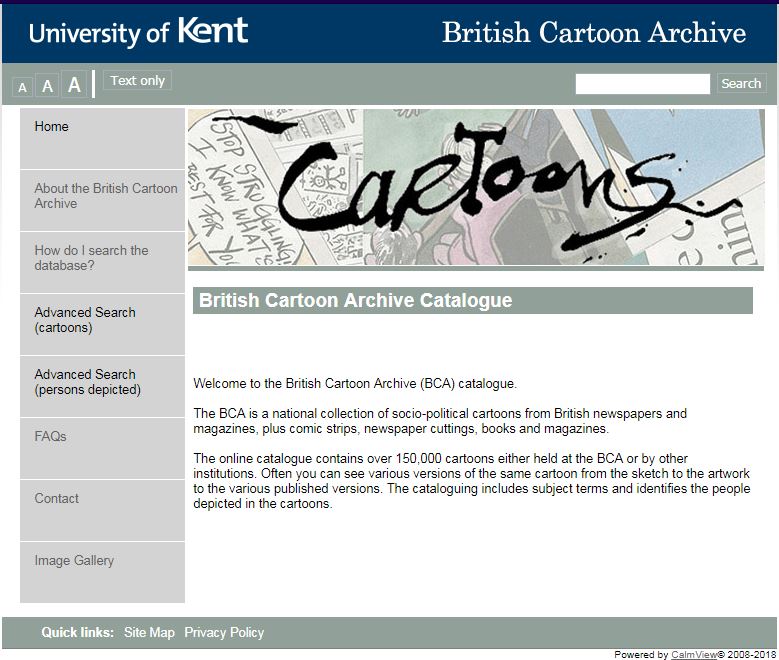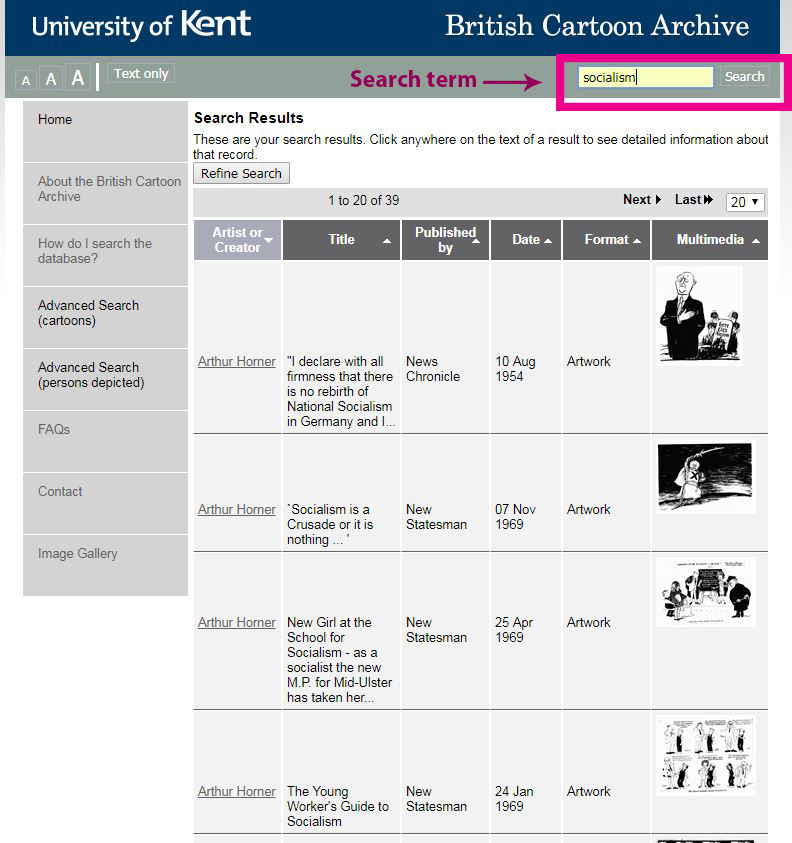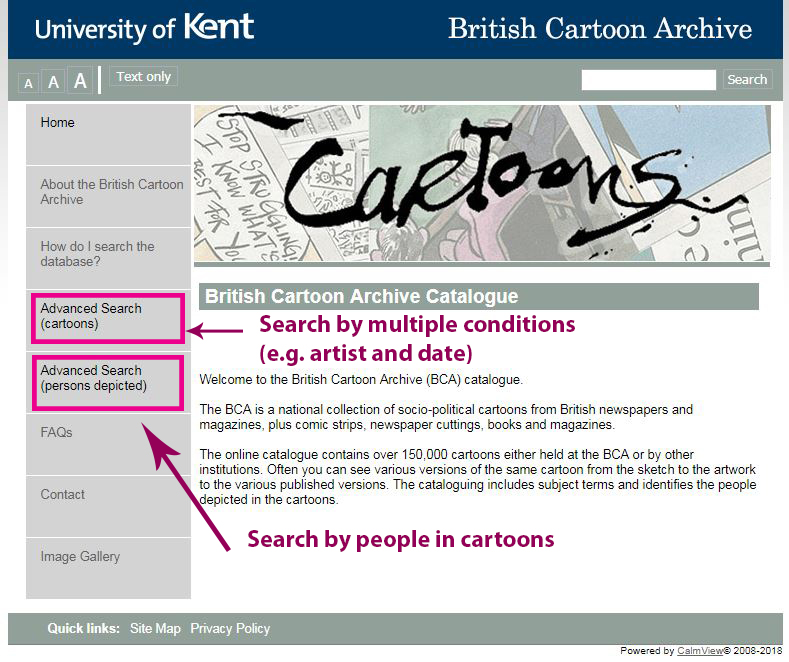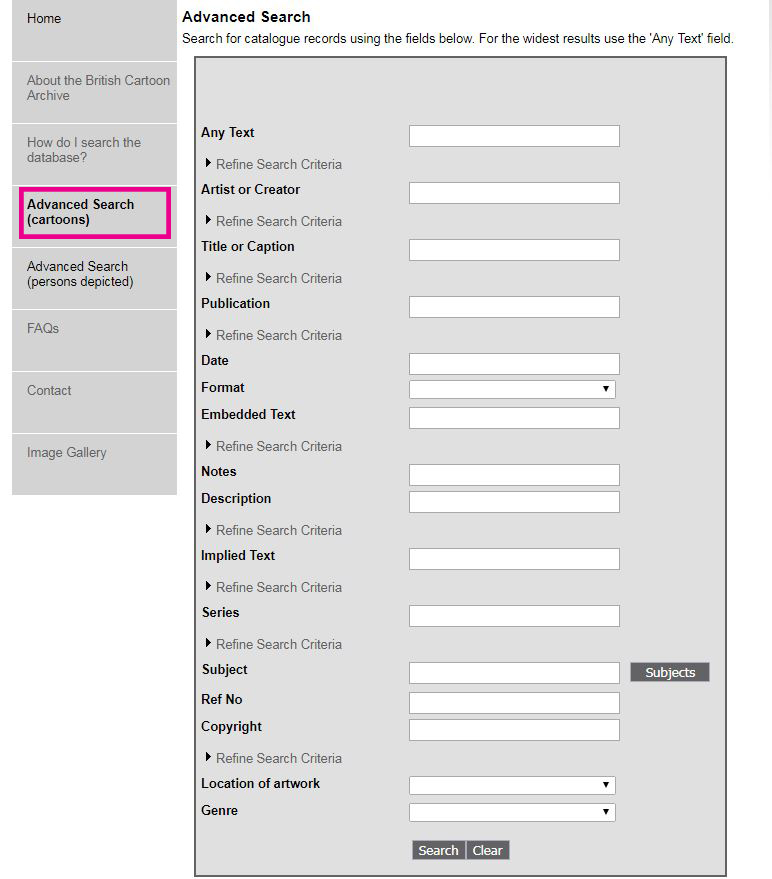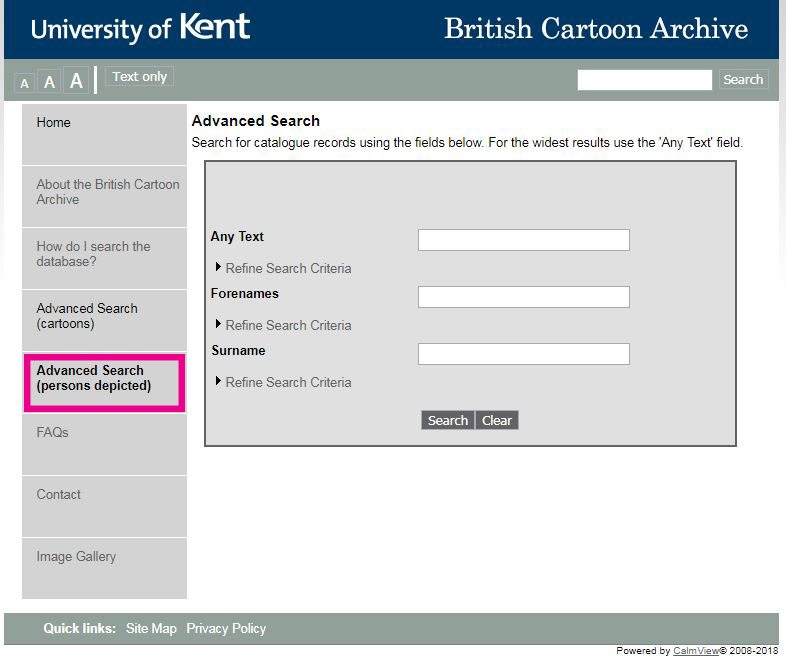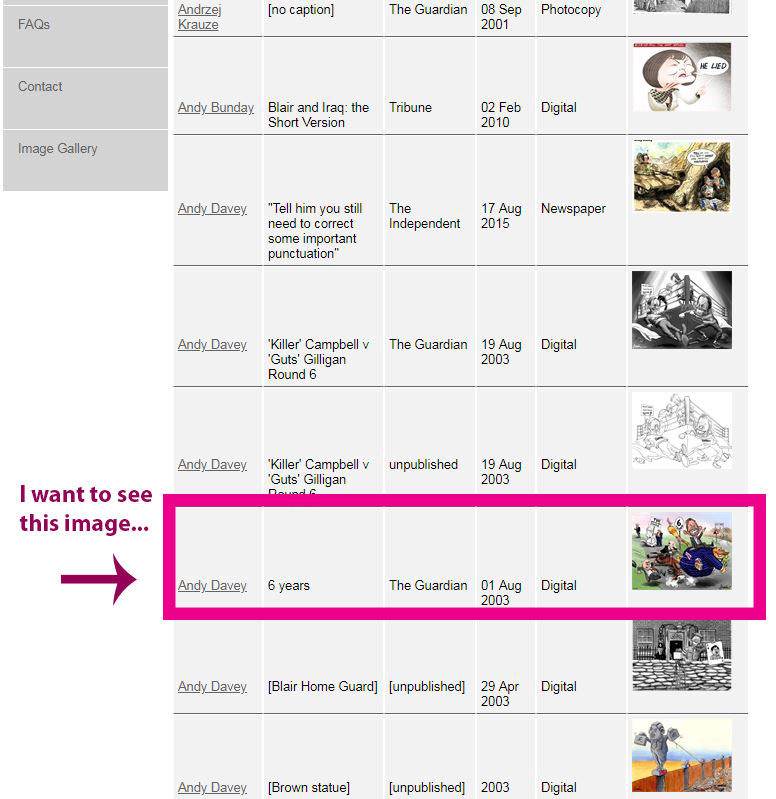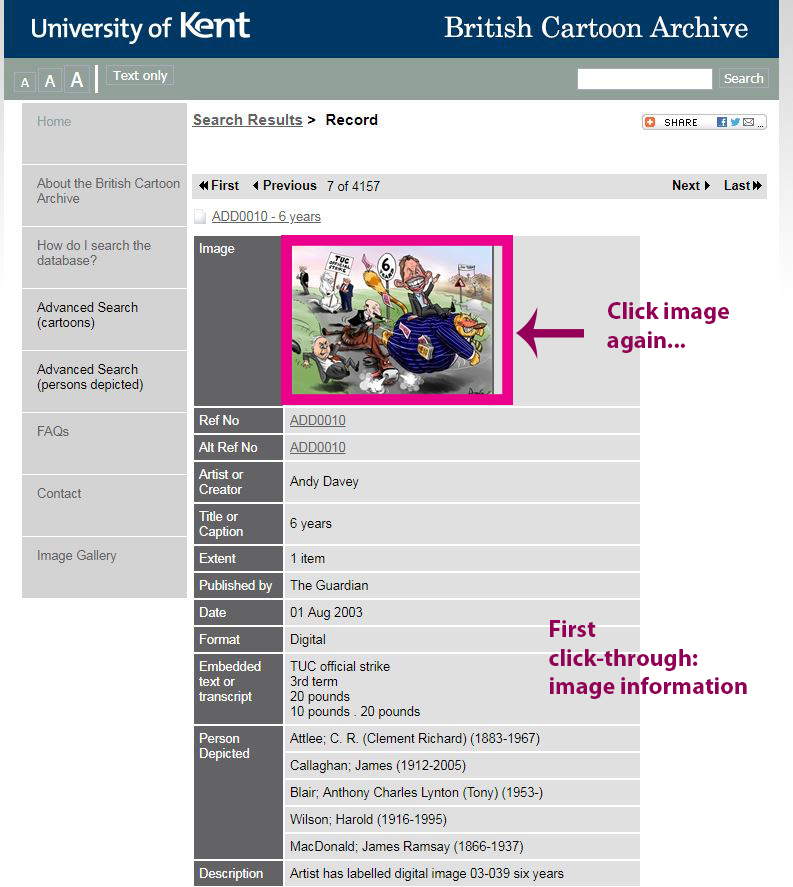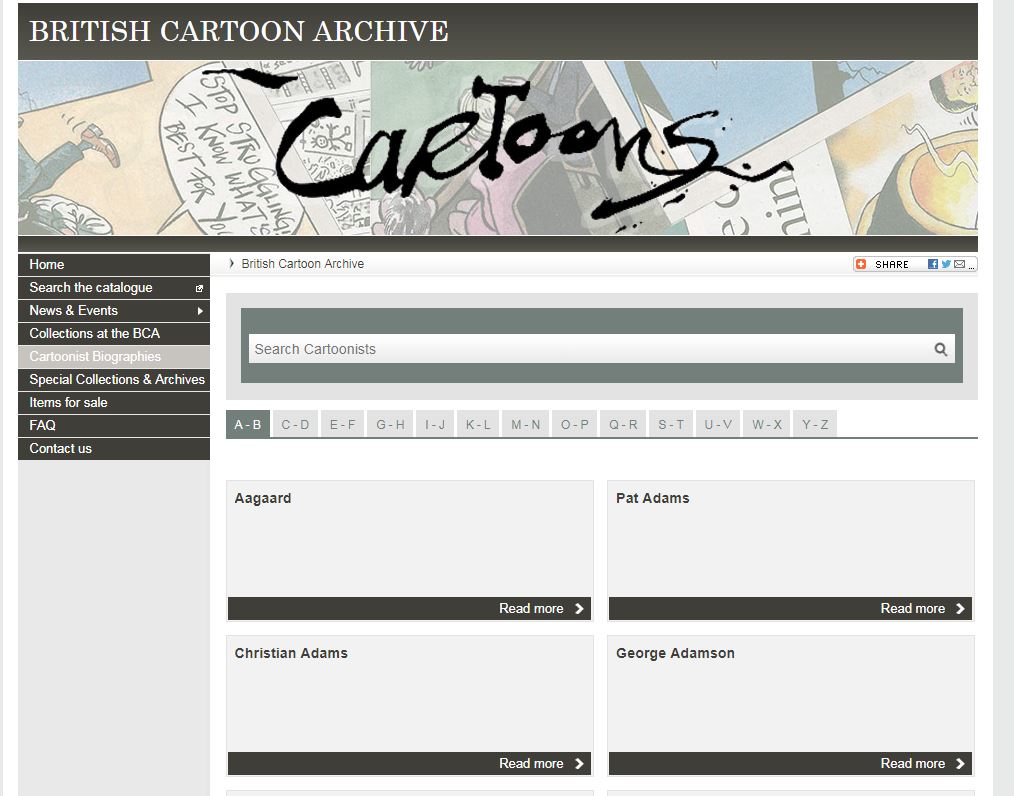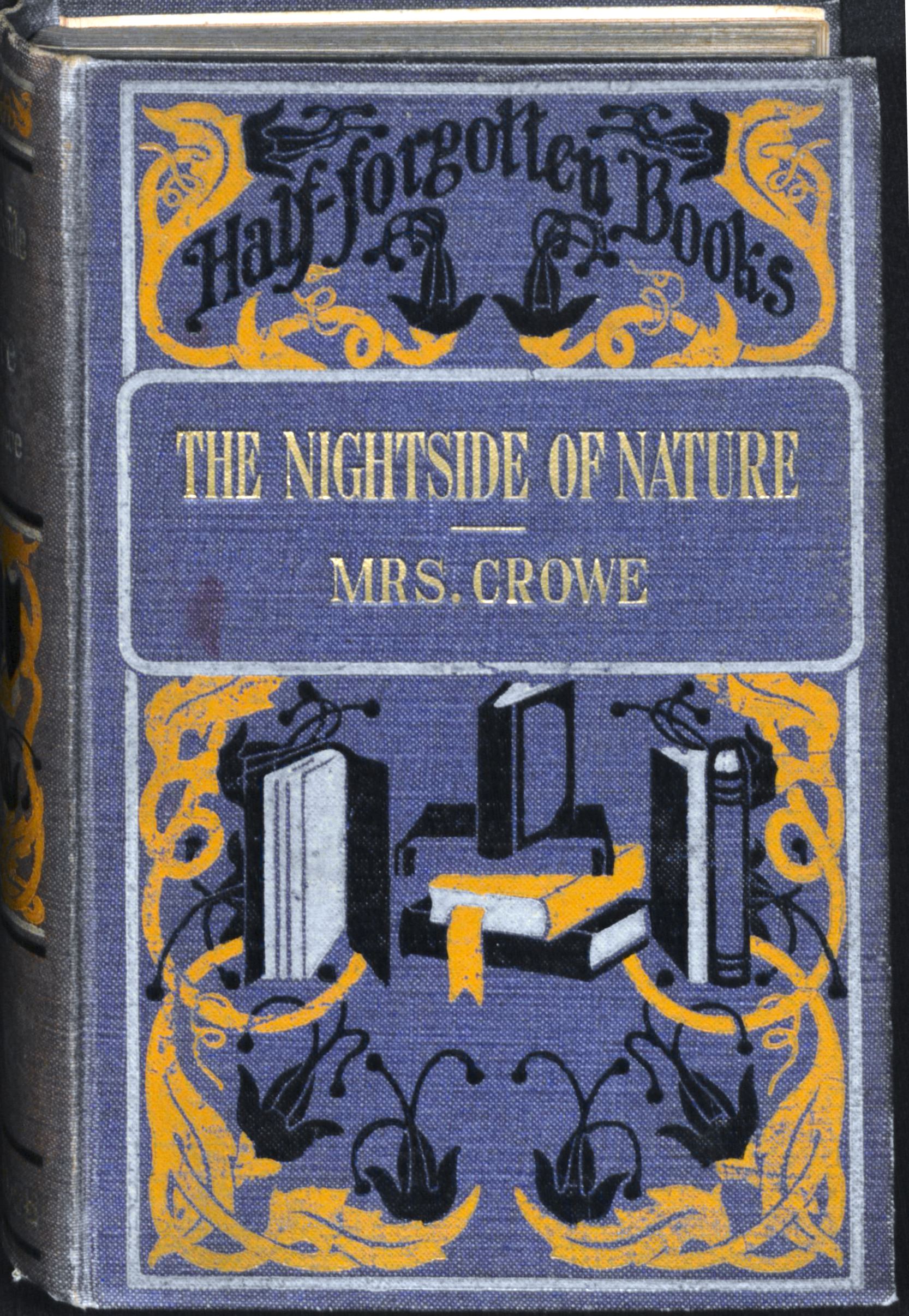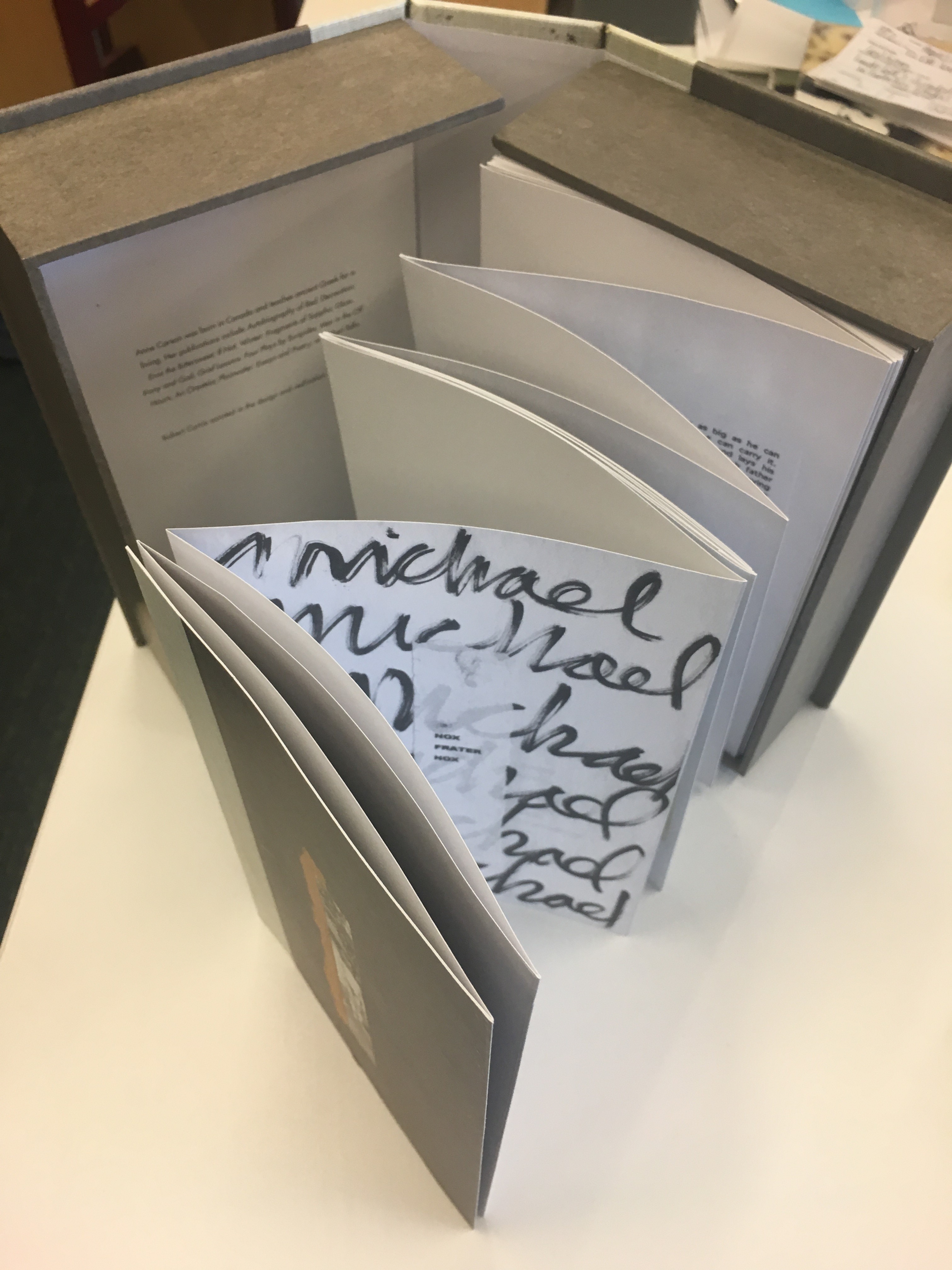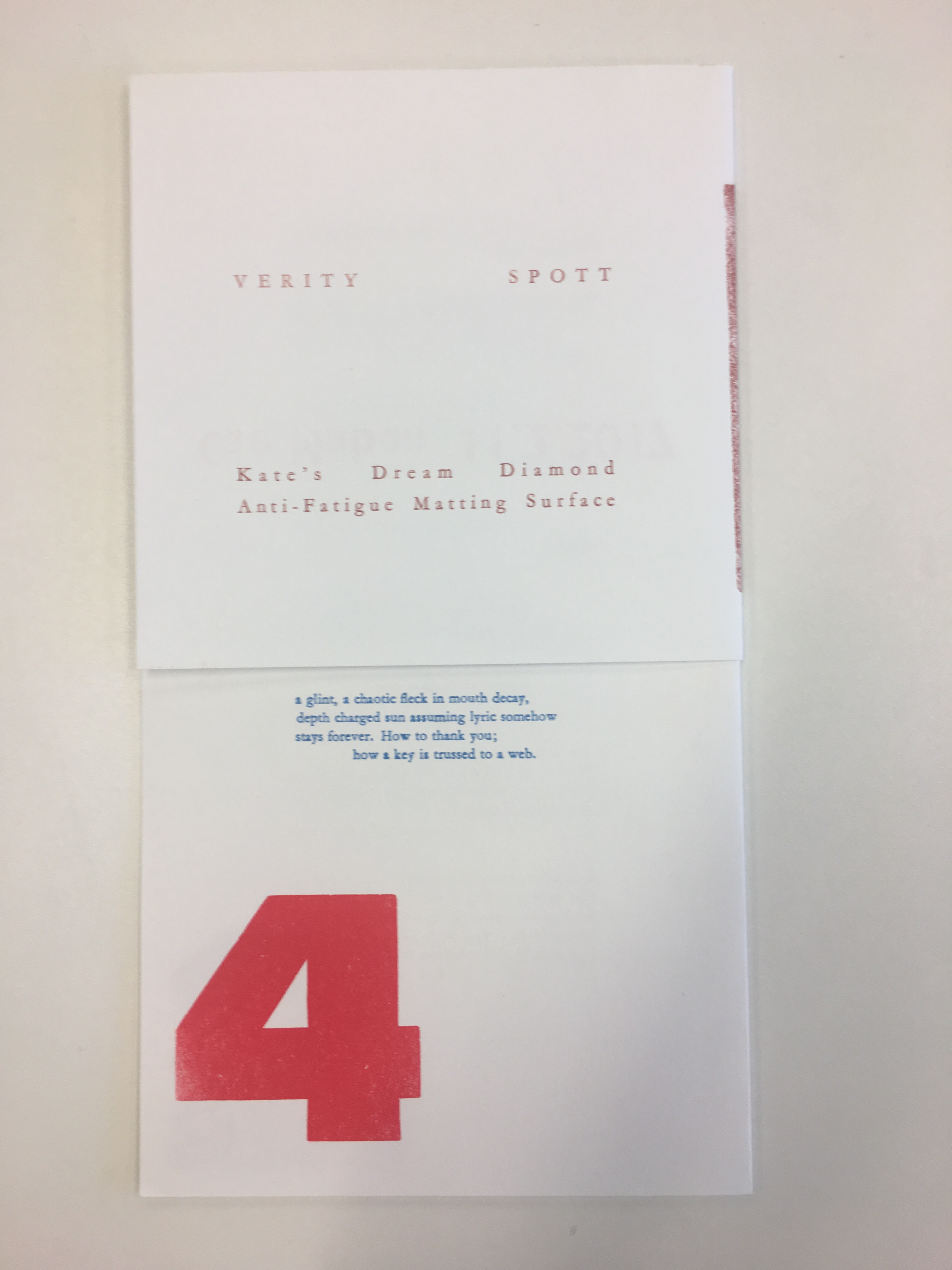On Wednesday 5 August 1945 the Giles Family appeared for the first time in the pages of the Sunday Express. The creation of cartoonist Carl Giles (1916-1995), over the course of the next 45 years they would appear in over two thousand cartoons in the Sunday Express and Daily Express. For many people his cartoons capture British life in microcosm, and the Family became a national institution. Giles became the most famous and well-beloved cartoonist of his generation: in 2000 he was voted Britain’s Favourite Cartoonist of the 20th century.
This is the first in a series of blog posts and social media posts celebrating the Giles Family, drawing on the riches of the Carl Giles Archive, which has been part of the British Cartoon Archive since 2005. This series is in lieu of a physical exhibition in our Gallery space, owing to the Covid-19 pandemic. This first blog post will explore the origins of Giles the cartoonist and the birth of his Family.
Carl Giles: a brief biography
Ronald ‘Carl’ Giles was born in Islington, London, on 29 September 1916, the youngest son of Albert, a tobacconist, and Edith, a dressmaker. He left school at 13 and spent 5 years as an office boy in the animation studios of a London advertising agency. Giles never had any formal art training, but he began developing his artistic skills as an “in-betweener”, filling in the movement between key drawings. He also gained the lifelong nickname Carl, after the monster played by Boris Karloff in the 1932 release of Frankenstein, because of his short haircut. In 1935, he took a position at film producer Alexander Korda’s London Films, and worked on The Fox Hunt, the first British colour animation with sound. A near-fatal motorbike accident in 1936 left him blind and partially deaf in his right eye and ear, and he went to Suffolk to recuperate. He began submitting cartoons to newspapers and magazines and eventually became a regular with the left-wing London Sunday newspaper Reynolds News, including his first series ‘Young Ernie’.
His work was instantly popular, and by 1942, he began attracting attention from other newspapers, and in 1943 signed up with the Sunday Express, which then had the highest circulation in Britain. The self-described “dirty leftist” was initially “thoroughly miserable” at the right-wing Sunday Express, until the increasingly large postbag of fan letters showed him the attractions of addressing a vast readership. By 1947 he was also working for sister paper the Daily Express, and settled into a routine of three single-panel cartoons a week (two for the daily and one for the Sunday).
Exempt from war service because of his motorbike injuries, in September 1944 he became the official war cartoonist for the Express and travelled to the European war zone several times, being present both at the liberation of the Bergen-Belsen concentration camp and the German surrender on Luneberg Heath in May 1945.
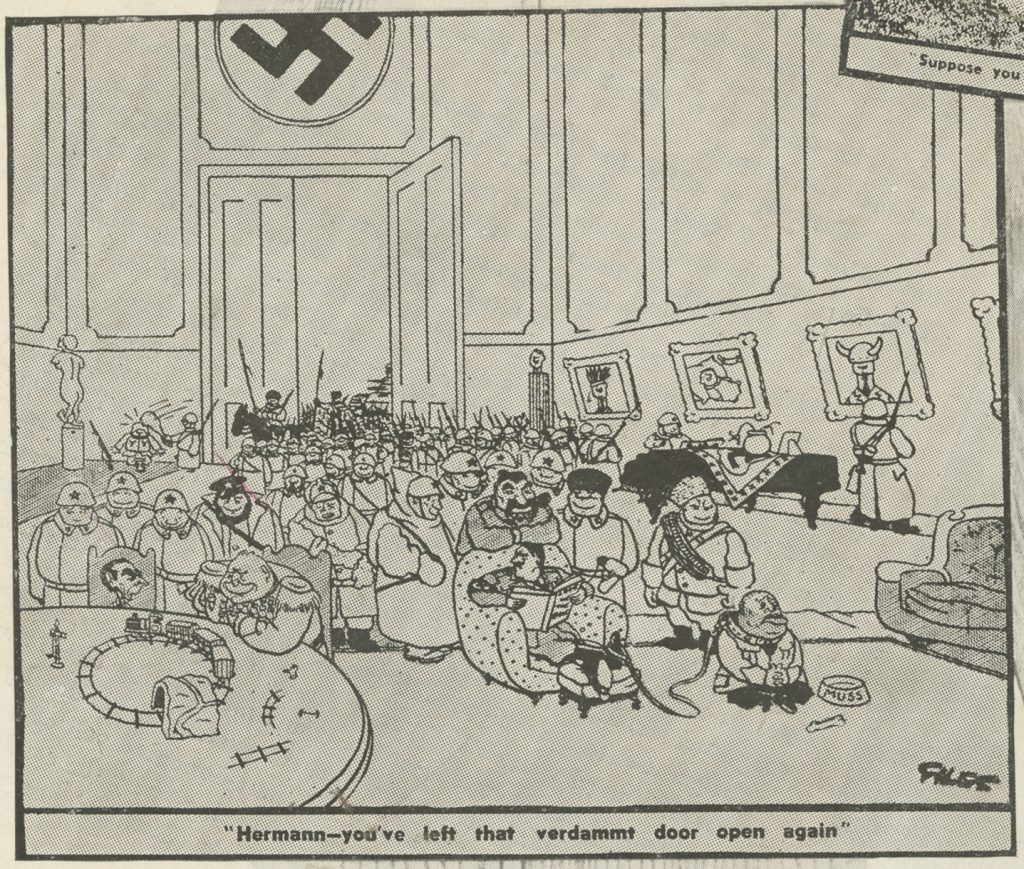
GAPC0466: “Hermann – you’ve left that verdammt door open again”, published Sunday Express, 3 October 1943
As the war in Europe ended, Giles realised that his cast of characters was rapidly diminishing. Giles had ridiculed the Axis leaders by presenting them as a dysfunctional family: his first cartoon for the Sunday Express in October 1943 had imagined Hitler, Goering, Goebbels and Mussolini as living a peculiar domestic life in Berlin, an idea to which he repeatedly returned. On Mussolini’s execution in April 1945, Giles later remarked, “I sure hated to see old Musso go […] he was half my bloody stock-in-trade”.
The Family arrives
The Giles Family was actively created as something to take the place of the ‘Axis Family’. The nominal focus of this new Family was one of his wartime soldier characters, returned to civilian life, and had its first recognisable appearance in the Sunday Express of 5 August 1945.
A comment on the chaotic and unreliable state of the railway network in the immediate aftermath of the war, the Family is shown walking along a deserted railway line with thermos and bucket and spade above the ironic caption “It’s quicker by rail”. All the elements that made Giles’ work so recognisable and beloved are here: the fine rendering of the English countryside, the accuracy in depicting the signalling equipment, the blink-and-you’ll-miss-it details like the child tumbling down the embankment, and, at the rear, a small black figure, so cleverly drawn that the eye is drawn towards her: Grandma.

GA0208: “If they give us an 11-hour day and a 4-day week, I suppose that means we’re going to have everybody at home for a 24-hour day 3 days a week.”, published Daily Express, 2 September 1947
In August 1947, the Daily Express ran a series of cartoons introducing the different characters to its readers. After that, as Giles recalled, “the Family took on a life of its own almost immediately”. As a cartoonist, Giles was an amused spectator rather than angry satirist. The Family proved a useful medium for commenting on post-war life, reacting to the confusion of world politics and a rapidly changing society.
The family are archetypally working class characters, a large, multi-generational household that are patriotic yet suspicious of authority. As the series progressed, they took on the attributes of a middle class household, with a car, caravan, yacht and foreign holidays. The family never aged, but their home, their hobbies and their dress reflected the changing British fashions and standard of living. The family’s common humanity had a wide social appeal.
The group of characters had achieved their final form by April 1950, when they were known as “Giles and Family”. By August 1951 this had become “The Giles Family”, and in November 1951, responding to “constant public enquiries”, Giles published “The Giles Family Tree”, explaining who everyone was (more of which in the next post).
Click here more information on the Giles Collection and the British Cartoon Archive.




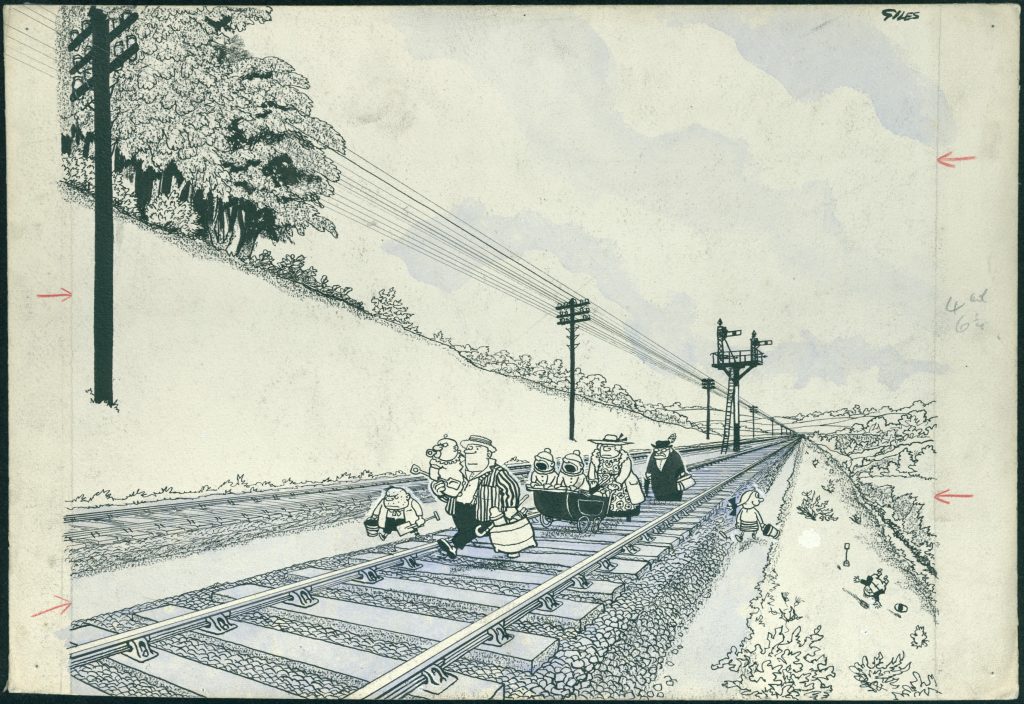
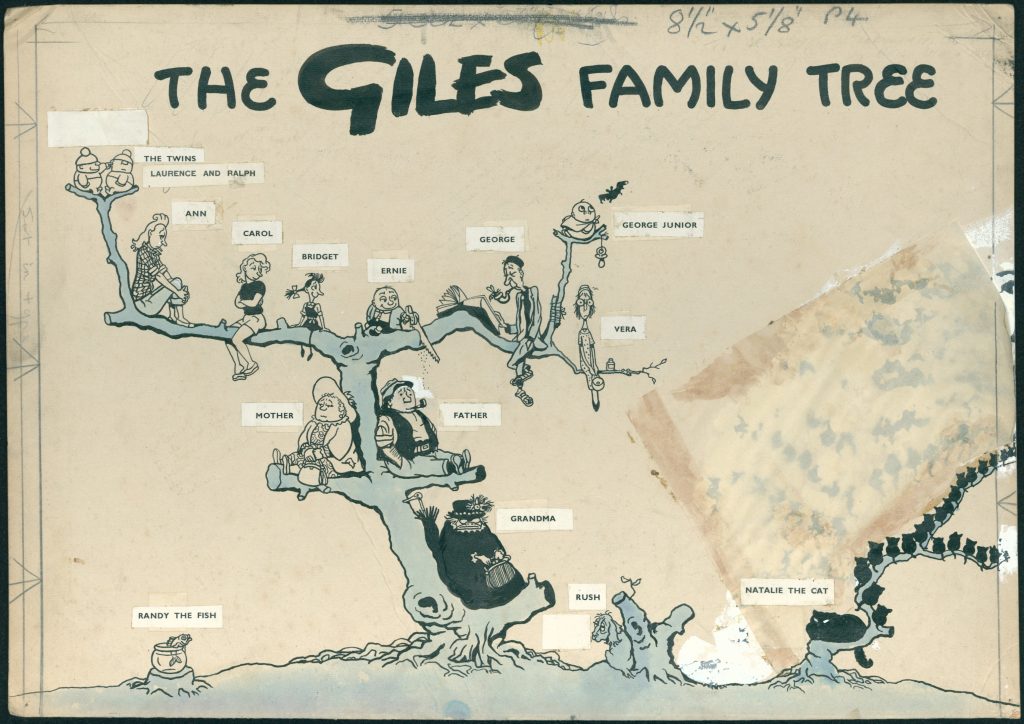

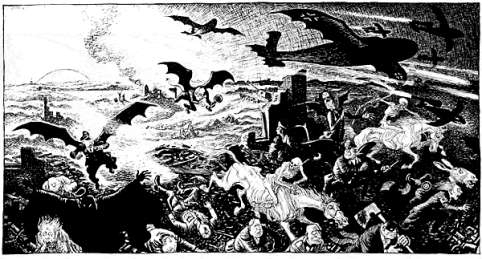

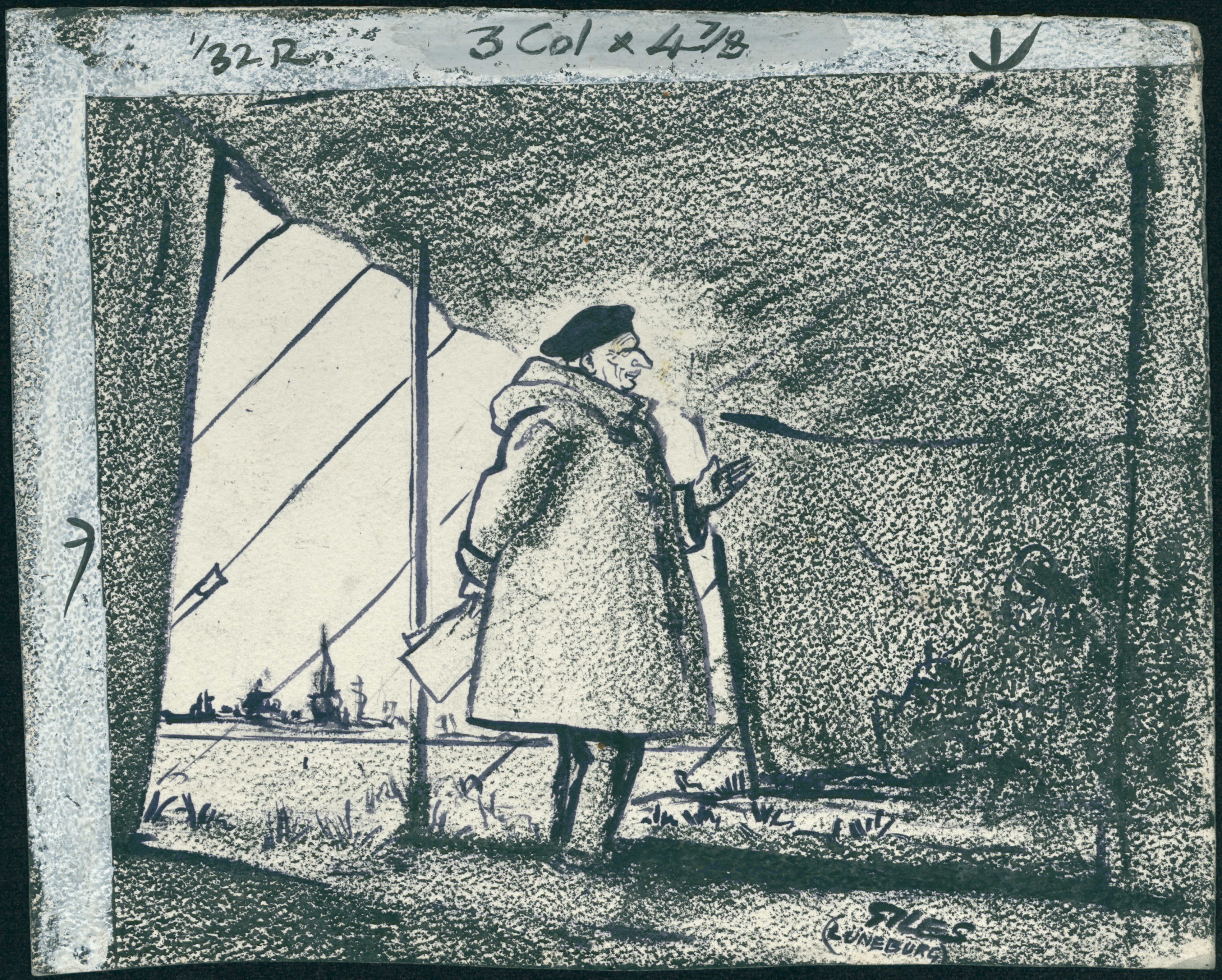
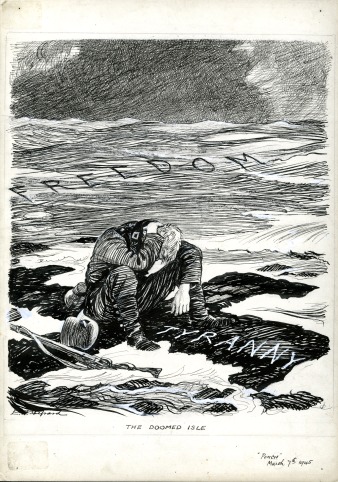
![David Low, [no caption], Evening Standard, 7th May 1945 (DL2415)](http://blogs.kent.ac.uk/specialcollections/files/2020/05/DL2415-1.jpg)


![David Low, [no caption], Evening Standard, 12th May 1945 (LSE1229A)](http://blogs.kent.ac.uk/specialcollections/files/2020/05/LSE1229A-1.jpg)
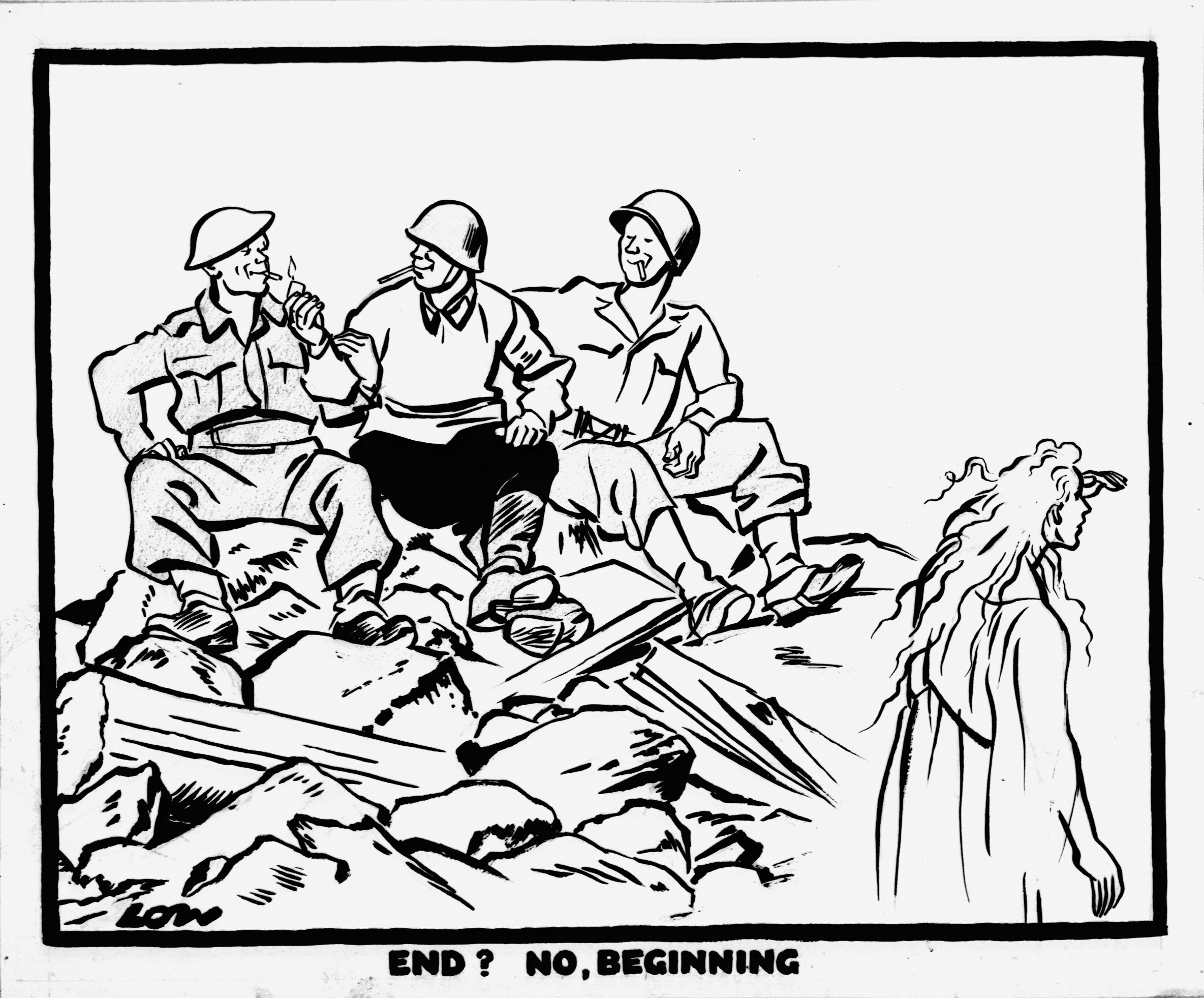
![Leslie Illingworth, [no caption], Daily Mail, 1 May 1945 (ILW0898)](http://blogs.kent.ac.uk/specialcollections/files/2020/05/ILW0898.jpg)
